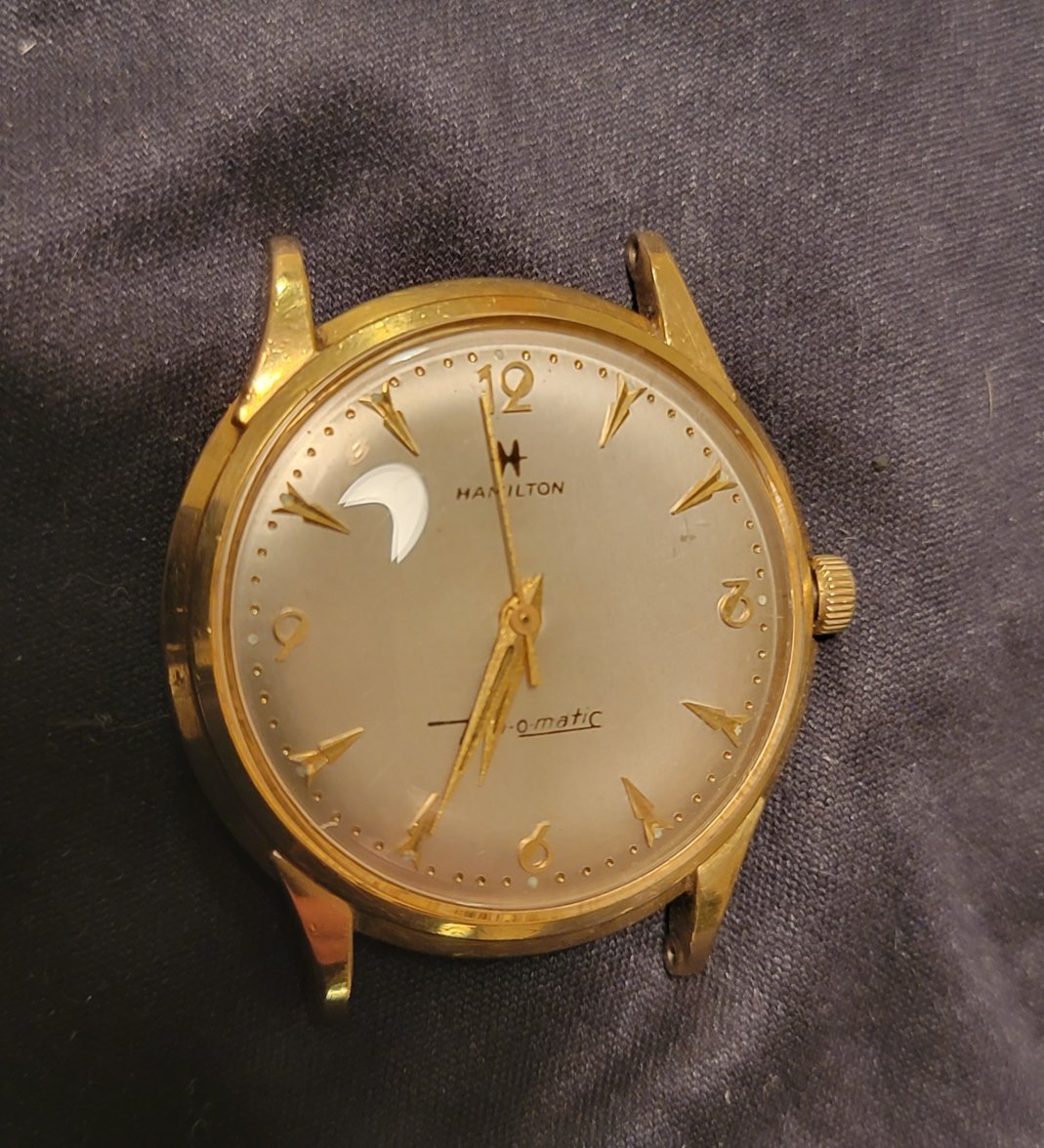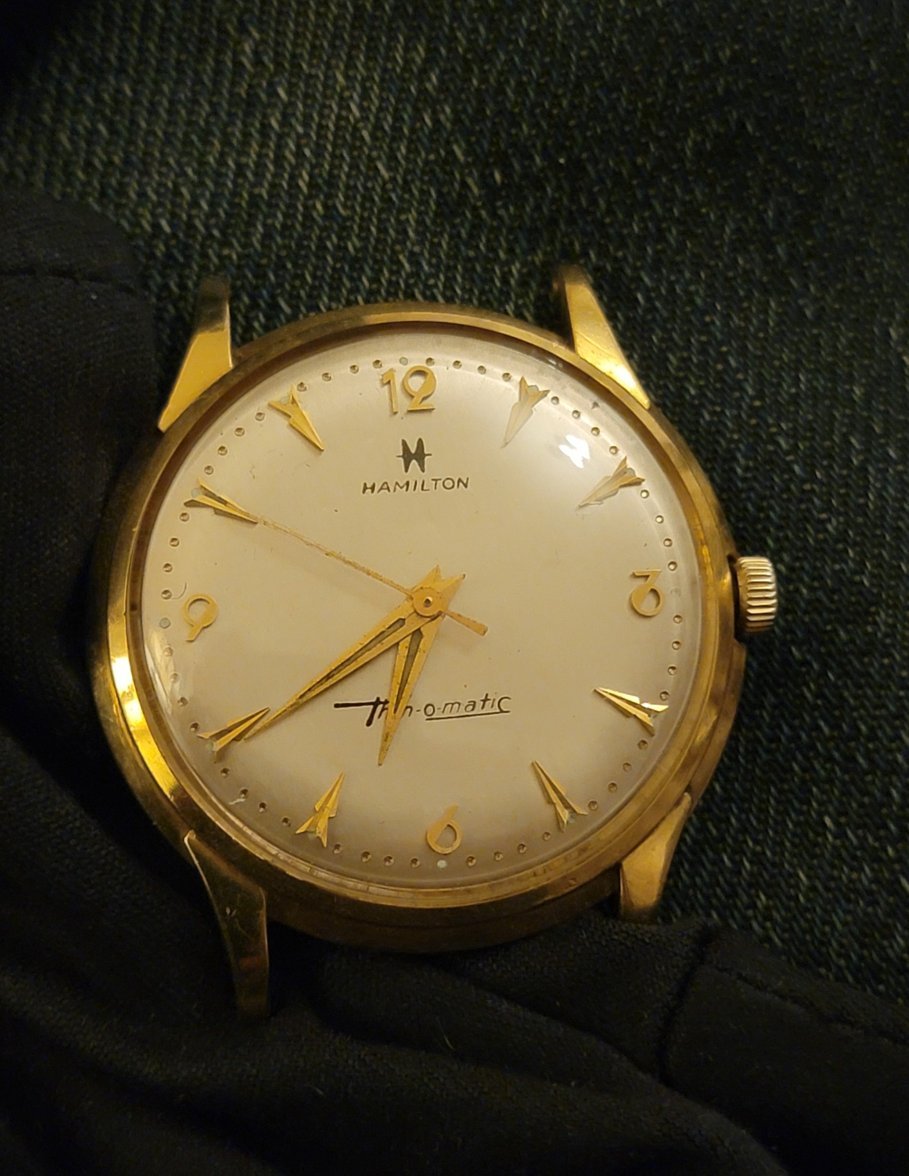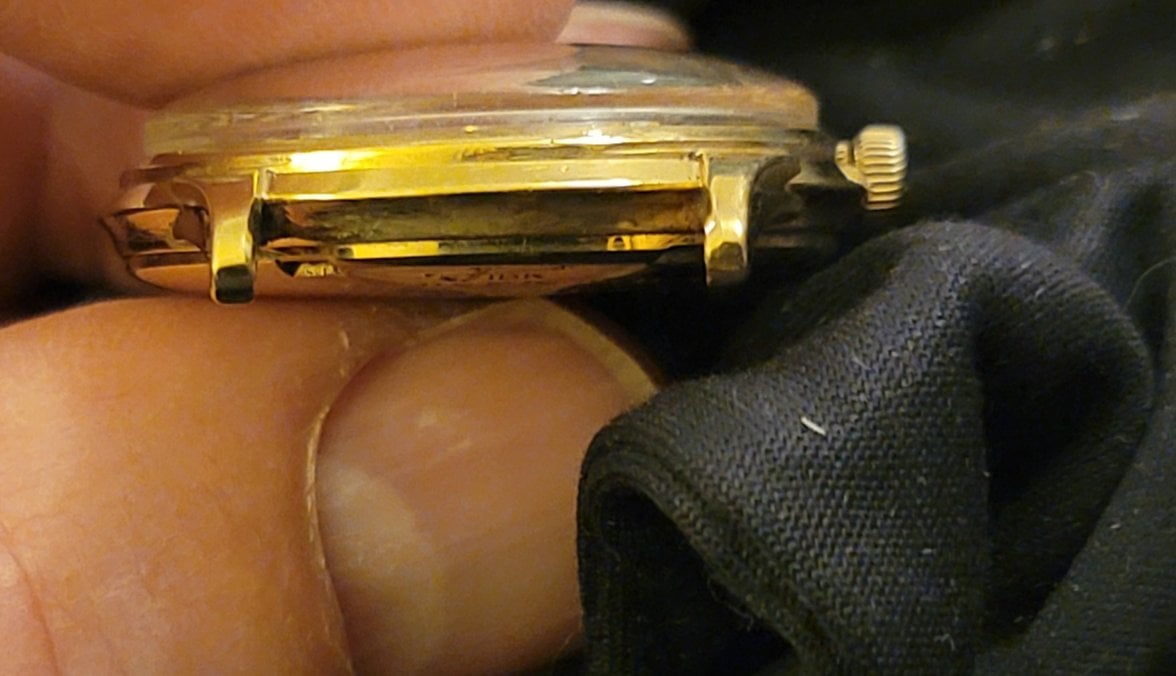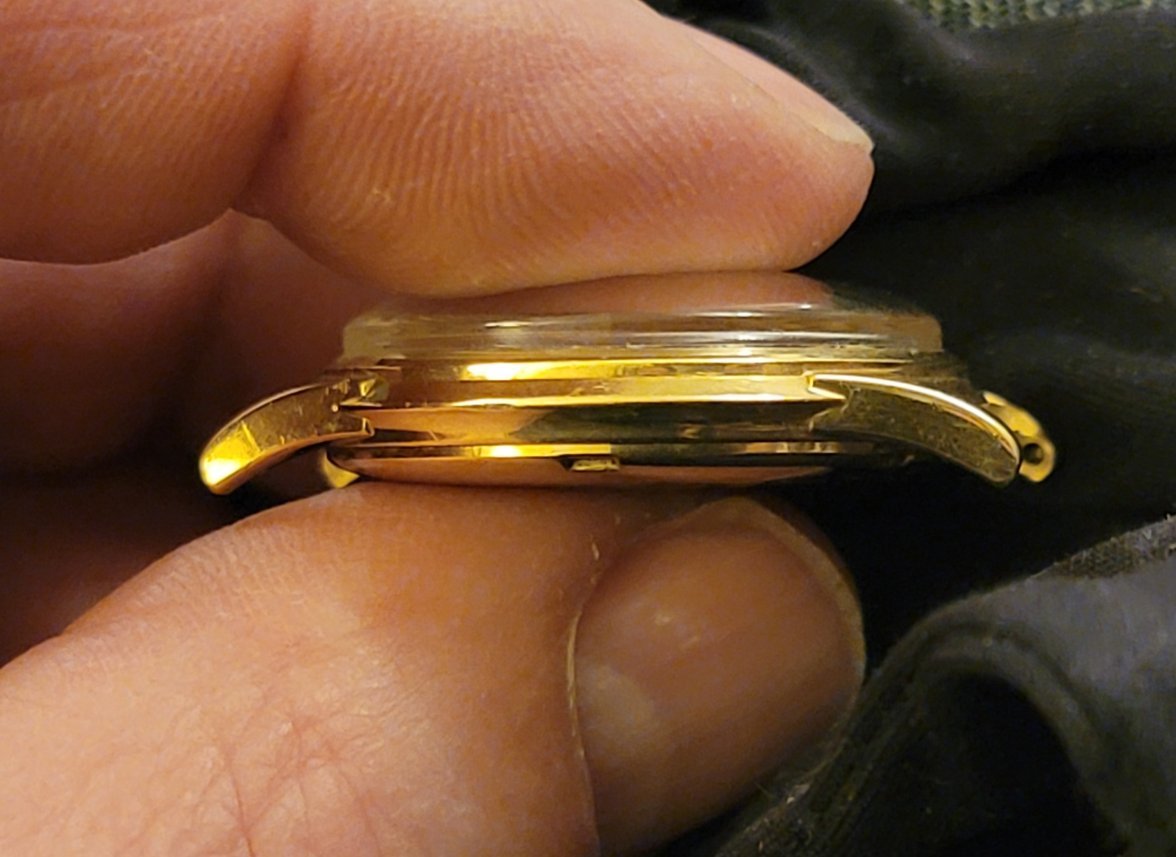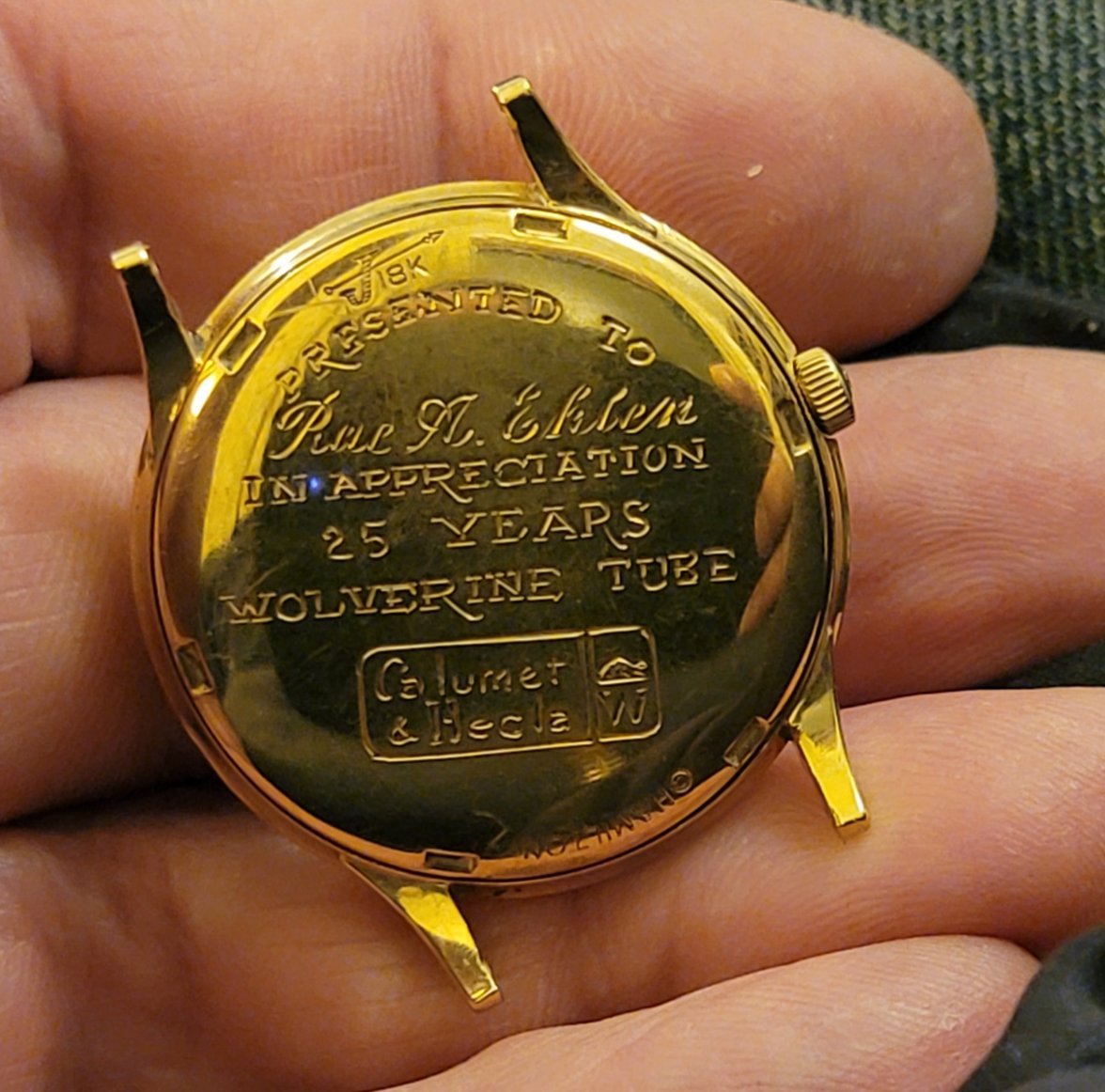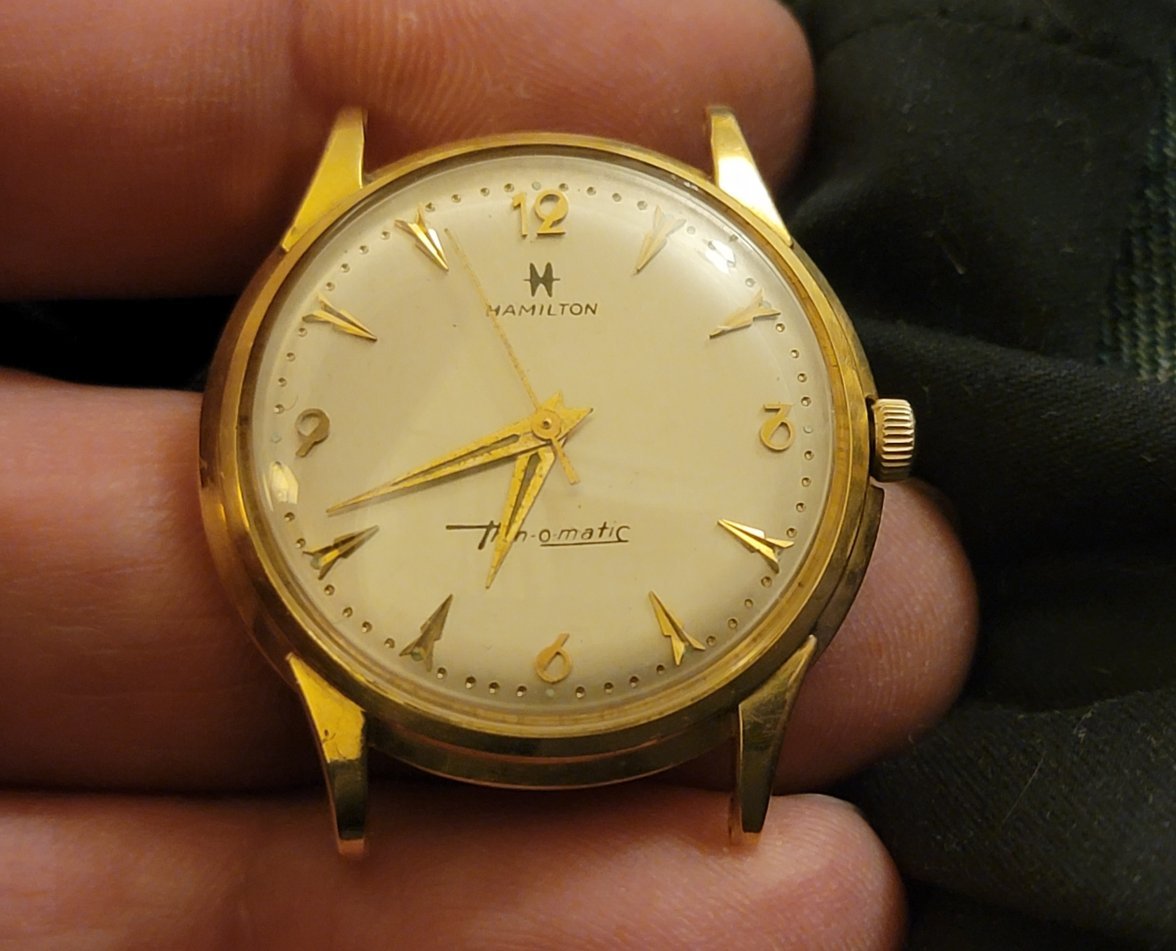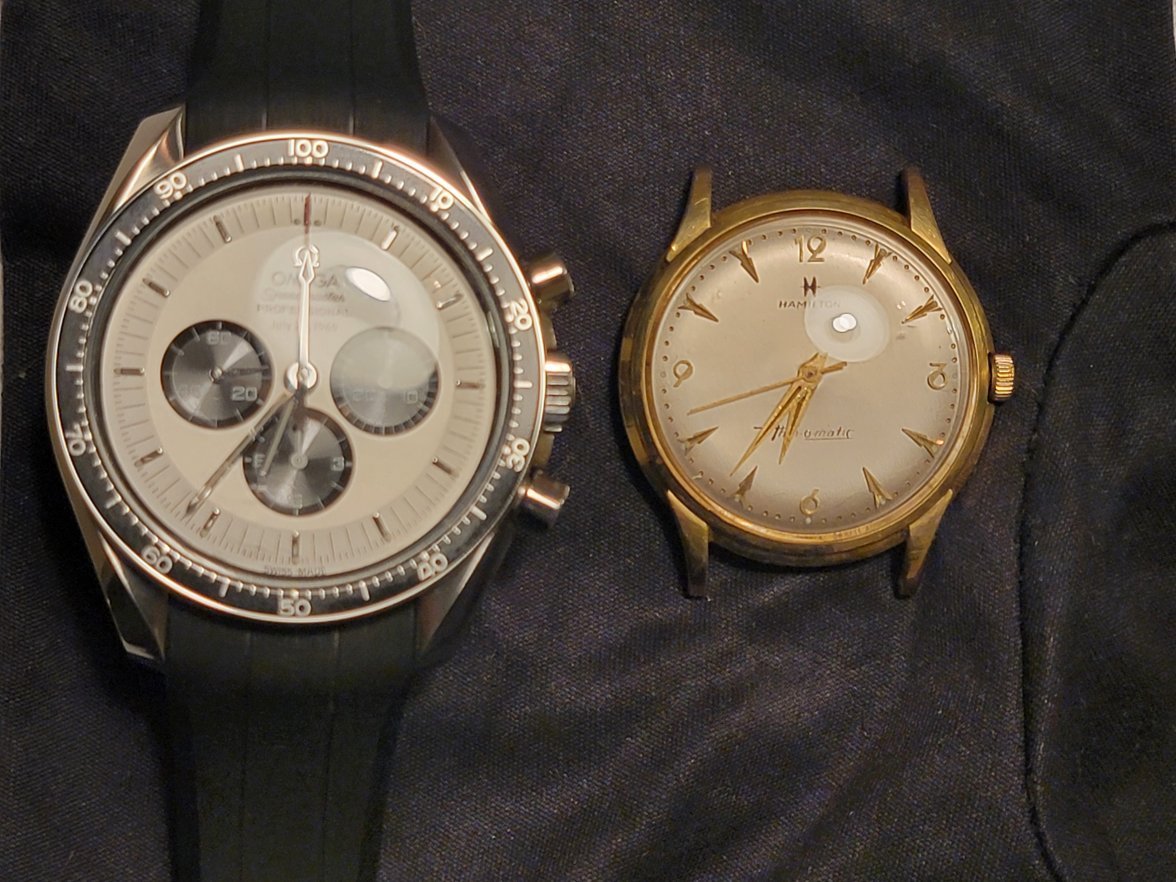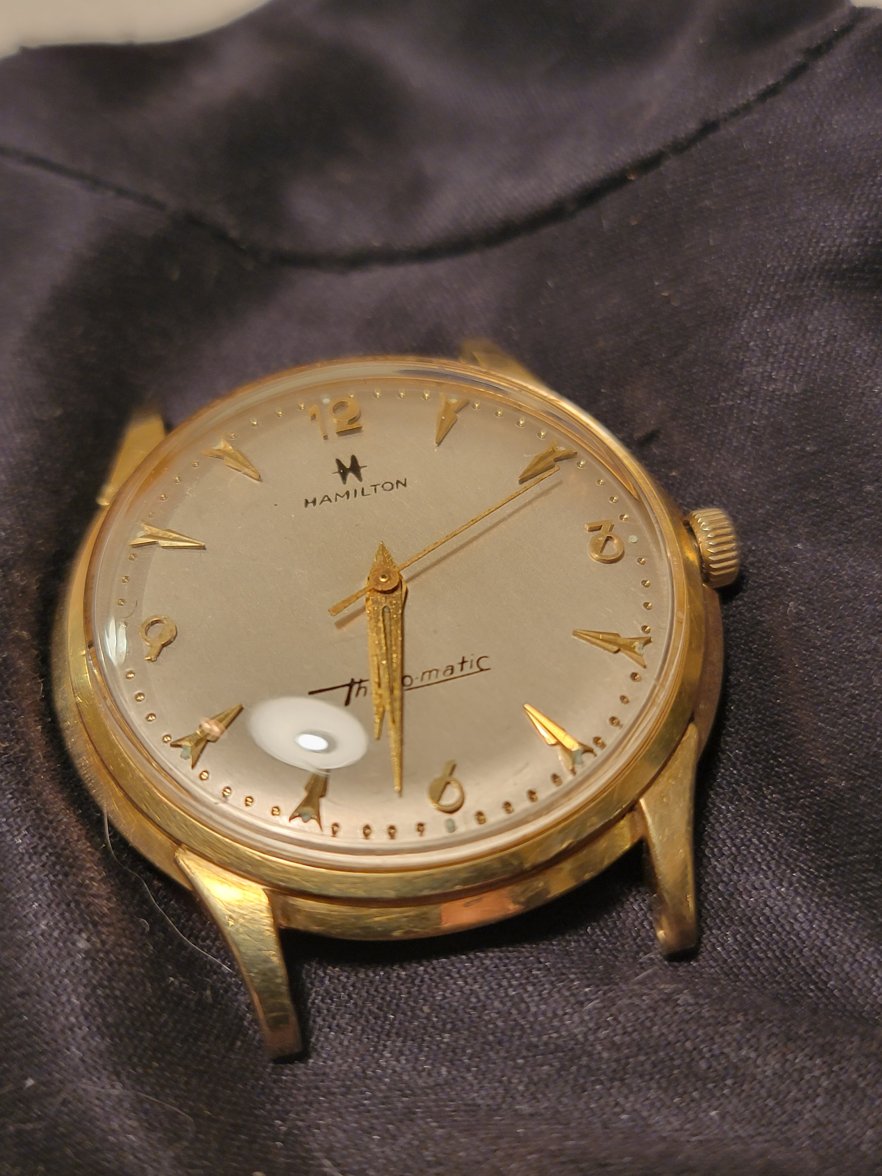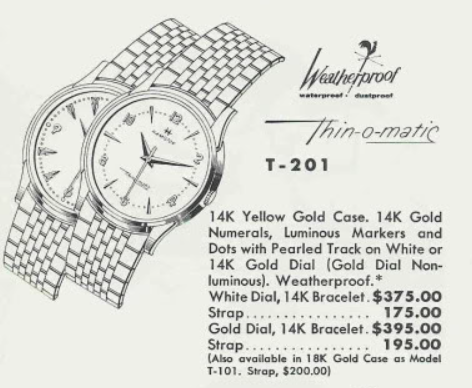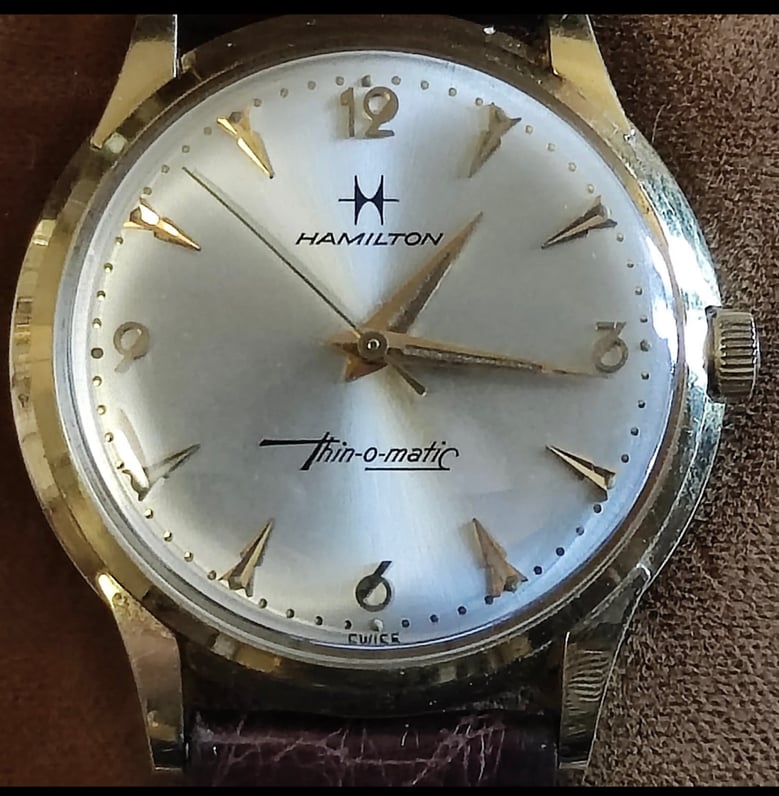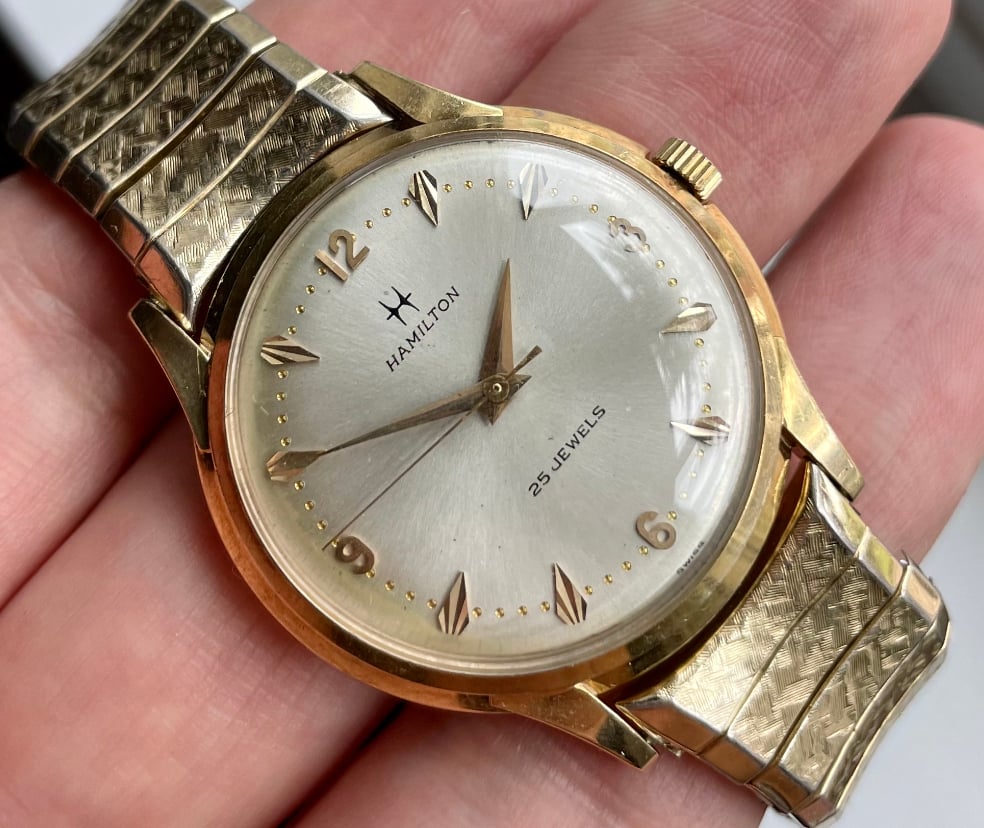pdxleaf
··Bye bye miss american pieAs the title says, I recently acquired this gold Thin-o-matic. This might interest Hamilton fans.
Previously I owned an 18k Stormking I watch, from which I learned that of the hundreds of Hamilton models, they only produced 15 models in 18k gold. It is another reminder that the scarcity and rarity does not always translate to price. I could find a 2998 sooner than another Hamilton T-101.
Just about everything I know comes from Dan's HamiltonChronicles blog. I suspect many of the Hamilton fans are familiar with his work.
From him I learned that there should be a 25 jewell caliber 691 micro-rotor made by Buren (edited). I haven't opened it yet and will defer to a watchmaker.
The watch came on a flex bracelet, which did its work on the lugs. The case is in otherwise good condition. The crystal cleaned up nicely with some poly and the dial looks unscratched. The hands are dirty and possibly pitted, but all the lume looks intact.
Surprisingly the little automatic started running as I cleaned the crystal and has been keeping time.
At 33mm, i intended this to be for my wife, although I have worn small Hamiltons and like them. When she she first saw itvshe said it looked old, which I believe she means the styling is dated.
Like all Hamiltons, this has very interesting curves and case lines. I don't think I adequately photographed it but you can probably get the idea. It should look great on a strap.
The caseback has an interesting engraving from an historic copper mine.
Here are pictures.
The ad says in small print that the 18k is available.
EDIT: Source Dan Keefe. HamiltonChronicles
"There are three different kinds of Thin-o-matic models, well, actually six if you want to include the ones with date complications.
"The first Thin-o-matic models used Buren-made Swiss ebauches with small oscillating weights, a.k.a. micro rotors. These movements include the 663, 666, et al calibers and were unique designs where all the parts were attached on the same side, or plain, of the main plate. This allowed the overall thickness of the movement to have a very thin profile.
"Also included in the early Thin-o-matics were ETA calibers that looked like the familiar ETA movements in the Accumatic line (689, 689A, et al) except the profile of the oscillating weight and overall movement was much narrower.
"You can easily tell what type of movement is inside a Thin-o-matic by looking at the back of the case. If it's wide and flat it's a micro-rotor and if it's pie-pan shaped it's got an ETA movement inside.
"In the 1967 time frame Hamilton had acquired Buren and a new generation of Thin-o-matic models were introduced. The new micro-rotor movements look similar to the earlier generation but there are a number of critical differences. One of the biggest is the center wheel is offset in the second generation calibers and that can present a significant challenge to collectors today. The other, more obvious, difference is the earlier micro-rotors were plated with a pink plating while the second generation are nickel plated.
"Hamilton changed the model nomenclature for the new generation of Thin-o-matics from T-something to TM-something. So if the model name begins with TM then you know it's from after 1967."
Previously I owned an 18k Stormking I watch, from which I learned that of the hundreds of Hamilton models, they only produced 15 models in 18k gold. It is another reminder that the scarcity and rarity does not always translate to price. I could find a 2998 sooner than another Hamilton T-101.
Just about everything I know comes from Dan's HamiltonChronicles blog. I suspect many of the Hamilton fans are familiar with his work.
From him I learned that there should be a 25 jewell caliber 691 micro-rotor made by Buren (edited). I haven't opened it yet and will defer to a watchmaker.
The watch came on a flex bracelet, which did its work on the lugs. The case is in otherwise good condition. The crystal cleaned up nicely with some poly and the dial looks unscratched. The hands are dirty and possibly pitted, but all the lume looks intact.
Surprisingly the little automatic started running as I cleaned the crystal and has been keeping time.
At 33mm, i intended this to be for my wife, although I have worn small Hamiltons and like them. When she she first saw itvshe said it looked old, which I believe she means the styling is dated.
Like all Hamiltons, this has very interesting curves and case lines. I don't think I adequately photographed it but you can probably get the idea. It should look great on a strap.
The caseback has an interesting engraving from an historic copper mine.
Here are pictures.
The ad says in small print that the 18k is available.
EDIT: Source Dan Keefe. HamiltonChronicles
"There are three different kinds of Thin-o-matic models, well, actually six if you want to include the ones with date complications.
"The first Thin-o-matic models used Buren-made Swiss ebauches with small oscillating weights, a.k.a. micro rotors. These movements include the 663, 666, et al calibers and were unique designs where all the parts were attached on the same side, or plain, of the main plate. This allowed the overall thickness of the movement to have a very thin profile.
"Also included in the early Thin-o-matics were ETA calibers that looked like the familiar ETA movements in the Accumatic line (689, 689A, et al) except the profile of the oscillating weight and overall movement was much narrower.
"You can easily tell what type of movement is inside a Thin-o-matic by looking at the back of the case. If it's wide and flat it's a micro-rotor and if it's pie-pan shaped it's got an ETA movement inside.
"In the 1967 time frame Hamilton had acquired Buren and a new generation of Thin-o-matic models were introduced. The new micro-rotor movements look similar to the earlier generation but there are a number of critical differences. One of the biggest is the center wheel is offset in the second generation calibers and that can present a significant challenge to collectors today. The other, more obvious, difference is the earlier micro-rotors were plated with a pink plating while the second generation are nickel plated.
"Hamilton changed the model nomenclature for the new generation of Thin-o-matics from T-something to TM-something. So if the model name begins with TM then you know it's from after 1967."
Edited:
